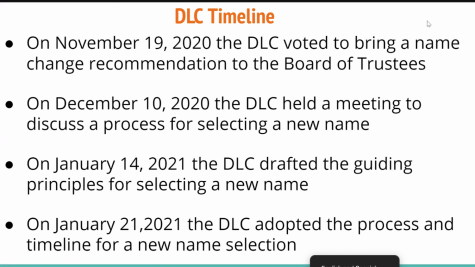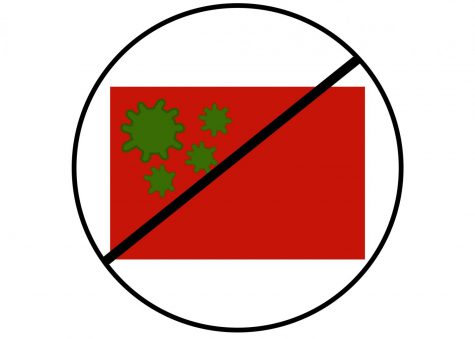Human trafficking thrives in Marin
We walk by the victims every day. Hundreds of thousands of them work in our nail salons, staff our hotels, walk our streets, only to disappear weeks later. Marin County, California: safe, affluent, suburban, and human trafficking capital.
Beneath Marin’s reputation for safety and low crime lies a far darker truth; this county hosts a vast web of sex and labor exploitation. Traffickers kidnap, transport, and sell their victims in Marin whilst many residents remain ignorant of the problem. They actively exploit this ignorance, leading many local organizations to push for greater public awareness, police training, and prevention education in local schools.
According to the Marin County Coalition to End Human Trafficking (“the Coalition”), the Bay Area is one of the largest human trafficking hubs in the entire country. The FBI reports San Francisco as one of the 13 top highest human sex trafficking areas in the U.S. However, the exact magnitude of the problem in Marin remains unknown due to the hidden nature of the crime, lack of resources for police and local organizations, the high-labor-intensive nature of investigations, and the under-reporting of cases, in part due to the lack of a comprehensive database to track victims.
Marin, according to the Coalition, presents a particularly favorable area for traffickers to transport and sell their victims, for a myriad of reasons.
According to Rosie De Alvarez, senior deputy probation officer in Marin County’s Juvenile Division and task force officer for the FBI’s Child Exploitation and Abduction Unit, traffickers move victims frequently in order to prevent detection by law enforcement. This circuit consists of around 12 brothels around the Bay Area. “These [victims] stay about two weeks in every brothel, and then they’re changed to a different city,” De Alvarez told the Marin IJ in 2015. Marin’s proximity to both San Francisco and Highway 101 makes transportation of victims in and out of the area particularly convenient.
And according to Marlene Capra, a Coalition representative, people in Marin are willing to pay traffickers cash… and a lot of it. The average profile of a buyer of sex services from trafficked victims (colloquially known as a “john”) is a male that’s married, has two children, and makes around $145,000 a year. This profiles many people in Marin, but that’s exactly the point that the Coalition and other organizations want to make: that victims, traffickers, and “johns” can be just about anyone.
Furthermore, the prevalence of drug abuse, domestic abuse, and depression in Marin makes many at risk for manipulation from and abduction by predators, who target weakness and loneliness. According to a 2016 Marin County Grand Jury report on sex trafficking, trafficking disproportionally targets at-risk populations, as these groups are often easier to manipulate and/or eventually abduct. These groups include LGBTQ+ youth, victims of abuse or neglect, undocumented immigrants and refugees (especially from Mexico, Honduras, El Salvador, and Guatemala), and homeless youth.
The vast majority of victims, around 70 percent to 90 percent, were sexually abused prior to being trafficked, suggesting that those who have previously been abused are more likely to be targeted and successfully manipulated by predators.
“If you think about it, it’s connected to so many issues, it’s connected to drug abuse, it’s connected to mental illness, it’s connected to isolation, loneliness, kids that are bullied.” Capra said, adding that sex traffickers are skilled at “sniffing out” vulnerabilities and exploiting them.
Traffickers target victims’ vulnerabilities, then break them down psychologically through a variety of techniques: intense manipulation, creating a drug dependence in the victim and then withholding said substance, physical and emotional abuse, and, most commonly, feigned affection. These traffickers, known as “Romeo pimps,” prey on victims with low self-esteem or that crave love and support. Once victims realize something is wrong with the romantic relationship, it’s often too late.
Once recruited, it’s difficult for victims to escape. Captives may fear physical violence, develop Stockholm syndrome, or become reliant on drugs supplied by the traffickers. Many fear seeking help from law enforcement due to prior negative experiences, fear of deportation or other prosecution, or the captor may have convinced the victims that they’re outside the law. Many victims of sex trafficking may not even realize that they’re victims, according to former Marin County Deputy District Attorney Chuck Caccatiatore.
“These [victims] have been brainwashed,” Caccatiatore said. Another difficulty he mentioned is getting victims to testify against their captors, due to both fear of revenge and intense manipulation. In some cases, this manipulation has lasted for years. “It’s scary to testify in court, to give a statement, to know that you’re ‘snitching’ on someone who has a gun.”
This difficulty may be exaggerated by ignorant or inexperienced law enforcement officers, Capra noted. Through numerous interviews with law enforcement, the county’s Grand Jury report found that almost half of Marin County officers believed that human trafficking is not a problem in their jurisdiction, despite reports stating that human trafficking occurs in every part of Marin to some extent.
Officers that don’t recognize human trafficking are much more likely to arrest victims on the charge of prostitution, which not only skews data on the true magnitude of the problem, but prevents victims from receiving proper help. Through proper training, officers could both recognize and address incidents of trafficking.
Education for law enforcement does seem to be improving; voters in 2012 passed Proposition 35, which mandates a minimum of two hours of training in human trafficking for every officer assigned to field or investigative duties. A representative of the Central Marin Police Authority, which serves Corte Madera, Larkspur, San Anselmo, and Greenbrae, noted that its officers take part in monthly presentations around the problem, although they believe that the issue isn’t as dire in their jurisdiction as in San Rafael.
That same preconception that human trafficking doesn’t happen in This area puts children at risk, according to the Grand Jury report. The average onset for girls and boys subjected to child trafficking is 12 to 14 and 11 to 13, respectively, which makes middle school education around the subject vital to reduce their vulnerability.
Capra stressed the importance of education to prevent trafficking; “If we can […] educate people before they get involved in that type of situation or before they become vulnerable to it […] think of the lives you could save.








